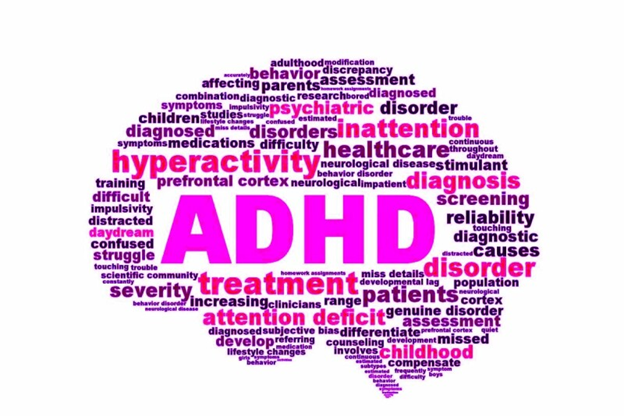For families navigating ADHD, homeschooling can be both a relief and a challenge. On one hand, it removes many of the distractions and rigid structures of a traditional classroom. On the other hand, it requires thoughtful planning to maintain a balance between flexibility and consistency—especially for gifted or twice-exceptional learners.

At Scholars Academy, we understand the nuances of teaching students with ADHD. Here’s what works, what to avoid, and how to build a schedule that brings out the best in your child.
Why Structure Matters (But Must Stay Flexible)

Children with ADHD often thrive on routine, but not rigidity. They need predictability to reduce anxiety, yet enough autonomy to feel in control. A well-crafted homeschool schedule should act as a rhythm, not a prison.
Think of it this way: the goal is to keep the day flowing—not force your child into an industrial-age school mold. The beauty of homeschooling, particularly within programs like our K–12 Dyslexia Scholars Academy and K–12 Scholars Academy of Albemarle, is that students can work at their pace, engage deeply with subjects they love, and take meaningful breaks when needed.
Step 1: Build the Day Around Energy, Not the Clock

Many homeschool schedules mimic the traditional 8 AM–3 PM school day. For kids with ADHD, this approach often backfires. Instead, try designing the day around your child’s energy levels:
- Morning burst: If your child is most alert early on, start the day with challenging tasks—math, writing, or reading.
- Midday lull: Use this time for hands-on learning, nature walks, or creative outlets like music and art.
- Afternoon bounce-back: Reintroduce structured activities like science labs, coding, or group discussions with peers.
Rather than fighting their internal rhythms, this model works with them.
Step 2: Use Time Blocks, Not Rigid Periods

Instead of setting hard stops (e.g., “Math ends at 9:30”), use flexible time blocks—say 30–45 minutes—where the focus is on progress, not perfection. Give a 5-minute warning before transitions, and allow some decompression time between tasks.
This method gives kids room to engage without feeling rushed or punished for needing more time to settle in or complete a task.
Step 3: Keep the Schedule Visual

Visuals make a huge difference for ADHD learners. Try these tools:
- Daily whiteboard or printed chart: Use images, icons, or color-coding to outline the day.
- Task cards or magnets: Let students physically move “finished” tasks to a “done” column—it’s satisfying and builds a sense of accomplishment.
- Timers or hourglasses: Use them not to pressure, but to build awareness around focus and time usage.
Visual schedules help reduce uncertainty and give kids a roadmap for their day, which improves both attention and mood.
Step 4: Prioritize Brain Breaks and Movement

One of the biggest scheduling mistakes with ADHD is not including enough movement and transition time.
We recommend:
- Frequent breaks: Every 30–45 minutes, take 5–10 minutes for physical activity—jumping jacks, stretching, or a walk outside.
- Body doubling: Sometimes, working alongside a parent or sibling (even silently) boosts focus and accountability.
- Movement-based learning: Incorporate standing desks, balance balls, or even outdoor scavenger hunts into the learning process.
Programs that integrate movement and multisensory learning into the curriculum are ideal for ADHD brains.
Step 5: Build In “Choice Time”

Autonomy is powerful for kids with ADHD. Each day should include a “choice block” where students can pick:
- A passion project
- Creative writing
- Independent reading
- Building something STEM-related
- Exploring a new hobby or concept
These blocks not only help students self-regulate but also teach valuable decision-making skills.
Self-directed time should be an intentional part of every schedule to encourage students to explore their interests and take ownership of their learning path.
Step 6: Don’t Grade Everything

ADHD students often wrestle with motivation when every task is graded. Instead of constantly evaluating performance, use a mix of:
- Narrative feedback
- Skill-based check-ins
- Reflection prompts (e.g., “What did you enjoy most today?” or “What felt hard but worth it?”)
Flexible grading reinforces growth, not just outcomes. Students aren’t working for a grade—they’re working for themselves.
Step 7: Involve Your Child in Planning

Want more buy-in and less pushback? Make your child a co-creator of their schedule. Once a week, sit down and:
- Review what worked and didn’t
- Talk about what they want to explore next
- Rebuild the coming week’s schedule together
This collaborative model promotes self-advocacy, responsibility, and problem-solving—skills that will serve your child far beyond school.
Bonus Tip: Use Real-Time Learning Whenever Possible
Unlike many online schools, real-time, instructor-led models reduce the burden on parents, keep students socially engaged, and provide consistent structure without being rigid.
Whether your child is enrolled in a K–12 Virtual Academy, attends in-person classes, or is supported through a specialized program like one for Pre-Professional Dancers, they’re never left to navigate their education alone.
Final Thoughts
Homeschooling a child with ADHD isn’t about creating a flawless schedule—it’s about designing a daily flow that supports attention, creativity, and confidence. The ideal structure combines predictability with freedom, challenge with support, and work with play.
If your child has ADHD and needs more from school, there are programs built for thinkers, movers, and out-of-the-box learners—ready to help them thrive.
